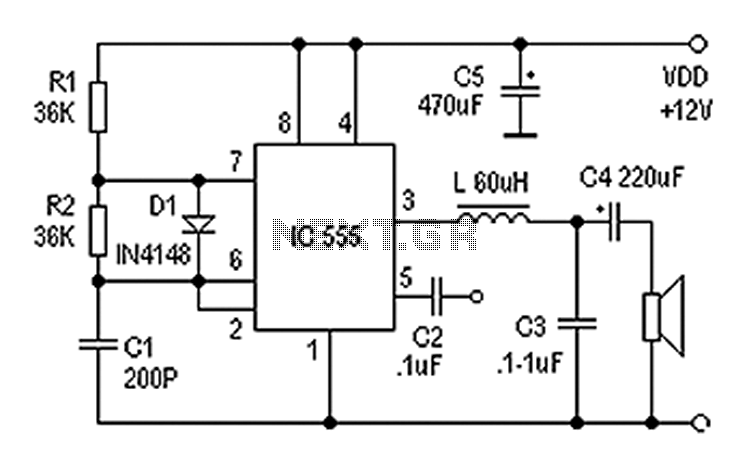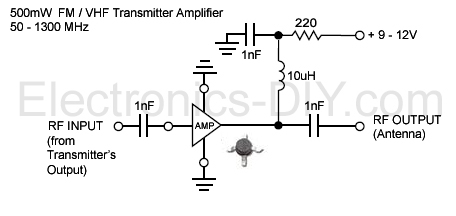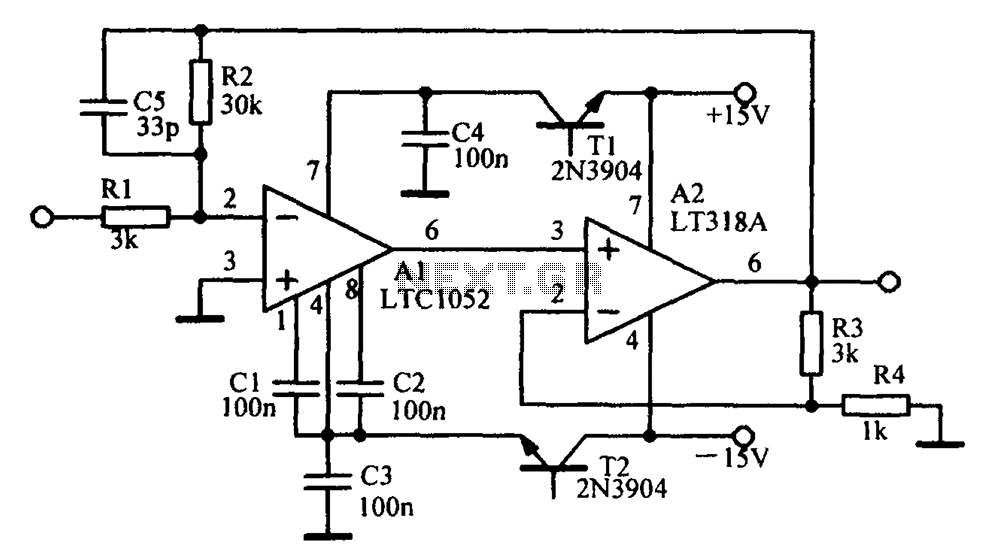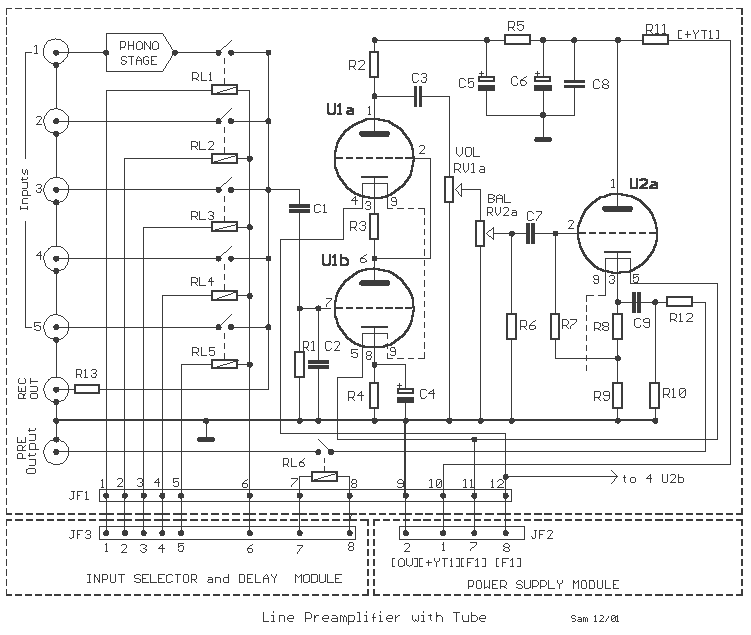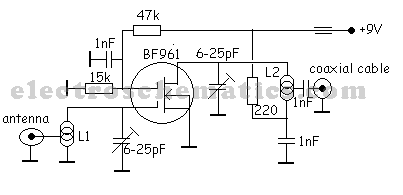
Class D amplifier for ATtiny15L
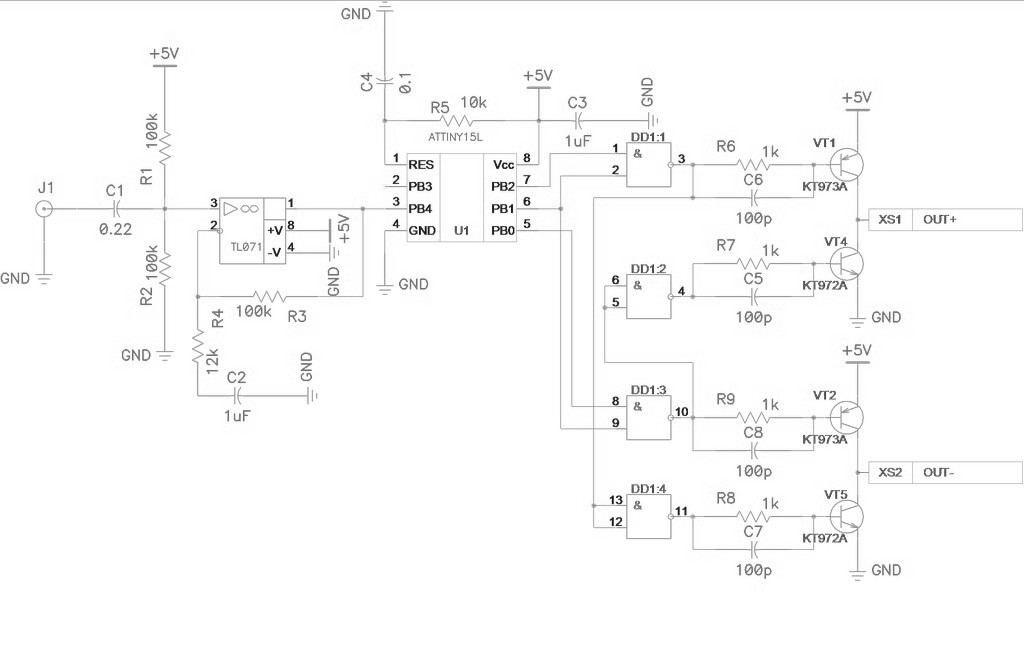
Class D amplifier circuit diagram for the ATtiny15L microcontroller. This document introduces a specific implementation of a Class D amplifier. The ATtiny15L from Atmel's AVR family is ideal for this application due to its integrated ten-bit analog-to-digital converter (ADC) and a timer that features pulse-width modulation (PWM).
The Class D amplifier circuit utilizes the ATtiny15L microcontroller, which is designed for efficient audio amplification. The microcontroller's ten-bit ADC allows for precise audio signal sampling, while the PWM timer facilitates the conversion of the digital audio signal into an analog output through modulation techniques.
In a typical Class D amplifier configuration, the audio input signal is fed into the ADC of the ATtiny15L, where it is digitized for processing. The PWM timer generates a series of pulses that correspond to the amplitude of the input signal. These pulses are then used to drive a power stage, typically consisting of MOSFETs or transistors, which switch on and off rapidly to produce a high-efficiency output.
The output stage is designed to filter out the high-frequency switching components, leaving a clean amplified audio signal suitable for driving speakers. The design may also include feedback mechanisms to enhance stability and minimize distortion, ensuring high fidelity in audio reproduction.
Power supply considerations are critical in this design, requiring appropriate filtering and decoupling to maintain performance and prevent noise interference. Adequate heat dissipation measures should also be implemented to ensure the reliability and longevity of the amplifier circuit.
Overall, this Class D amplifier circuit diagram illustrates a compact and efficient solution for audio amplification, leveraging the capabilities of the ATtiny15L microcontroller to deliver quality sound output.Class D amplifier for ATtiny15L microcontroller circuit diagram. These units can get acquainted with one embodiment of the amplifier is Class D. Controller ATtiny15L AVR family firm Atmel is perfectly suited for this purpose, because it contains a ten-digit analog-digital converter (ADC) and a timer with a pulse-width modulator (PWM). 🔗 External reference
The Class D amplifier circuit utilizes the ATtiny15L microcontroller, which is designed for efficient audio amplification. The microcontroller's ten-bit ADC allows for precise audio signal sampling, while the PWM timer facilitates the conversion of the digital audio signal into an analog output through modulation techniques.
In a typical Class D amplifier configuration, the audio input signal is fed into the ADC of the ATtiny15L, where it is digitized for processing. The PWM timer generates a series of pulses that correspond to the amplitude of the input signal. These pulses are then used to drive a power stage, typically consisting of MOSFETs or transistors, which switch on and off rapidly to produce a high-efficiency output.
The output stage is designed to filter out the high-frequency switching components, leaving a clean amplified audio signal suitable for driving speakers. The design may also include feedback mechanisms to enhance stability and minimize distortion, ensuring high fidelity in audio reproduction.
Power supply considerations are critical in this design, requiring appropriate filtering and decoupling to maintain performance and prevent noise interference. Adequate heat dissipation measures should also be implemented to ensure the reliability and longevity of the amplifier circuit.
Overall, this Class D amplifier circuit diagram illustrates a compact and efficient solution for audio amplification, leveraging the capabilities of the ATtiny15L microcontroller to deliver quality sound output.Class D amplifier for ATtiny15L microcontroller circuit diagram. These units can get acquainted with one embodiment of the amplifier is Class D. Controller ATtiny15L AVR family firm Atmel is perfectly suited for this purpose, because it contains a ten-digit analog-digital converter (ADC) and a timer with a pulse-width modulator (PWM). 🔗 External reference
